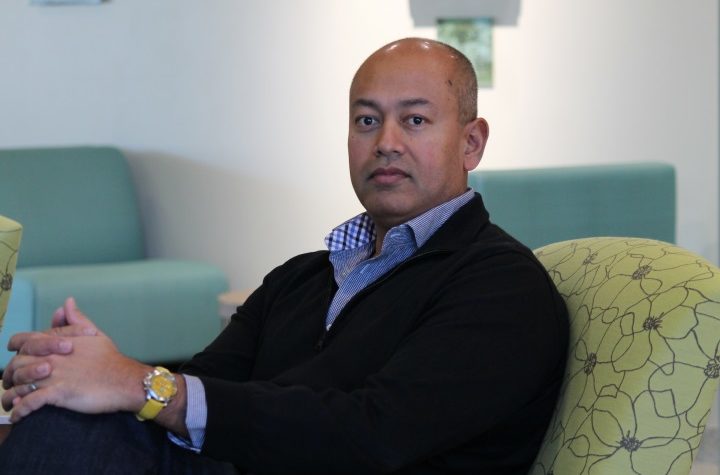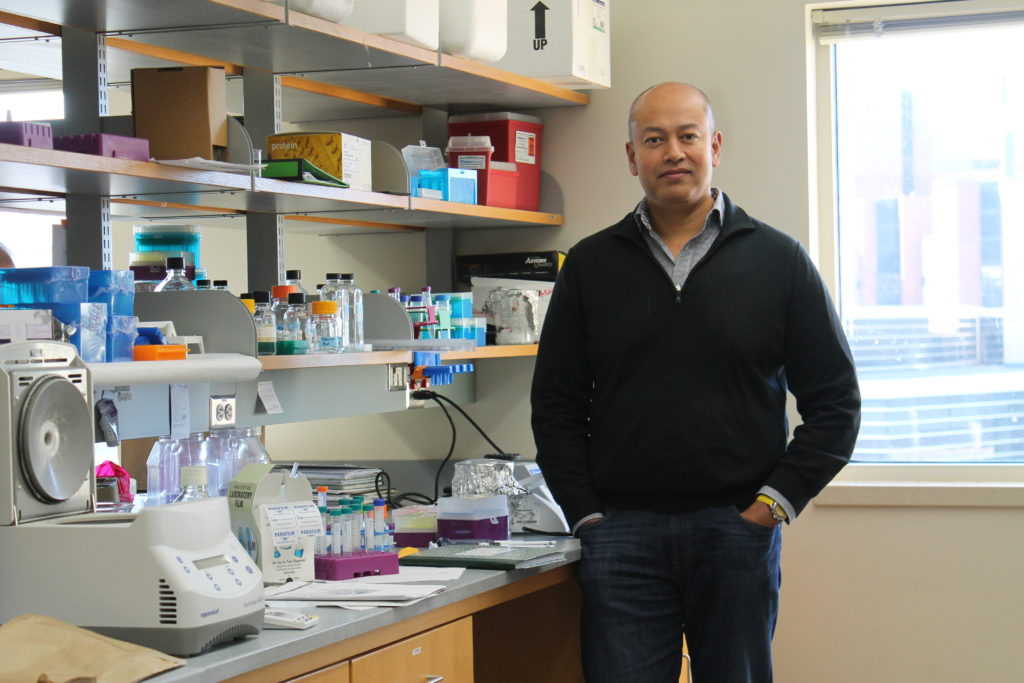
2
January

School of Pharmacy research reveals new insights into the cell death machinery
By Sarah Neuman
Physician and famed essayist on biology, Lewis Thomas, wrote “By the time I was born, more of me had died than survived,” in his book The Fragile Species in 1992, illustrating the key importance of cell death during development. Even as adults, hundreds of millions of cells within our bodies die every day. Cells die in a process of programmed cell suicide, called apoptosis, which eliminates old, damaged, or unneeded cells. Cells that can’t commit suicide are one step closer to becoming cancerous.
Apoptosis is executed by specialized enzymes called caspases. These enzymes are best known for their role in cleaving and destroying cellular targets during apoptosis, and in fact, the 2002 Nobel Prize in Physiology or Medicine was awarded for the discovery of caspases.
Living cells are filled with caspases that are inactive. When a cell initiates apoptosis, caspases are cleaved, making them active. Currently, activation of caspases is thought to be an all-or-nothing scenario. Since activated caspases can cleave and activate one another, this generates a rapidly-expanding wave of caspase activation, like a single match dropped into a container of fuel. This massive wave of caspase activation causes the complete destruction of the cell.
Not necessarily an assassin
However, in the last few years, it has become increasingly clear that caspases can also function without killing the cell.
“For example, during development, many neurons produce projections and connections that are not needed later in life, and caspase activation is required to “prune” these old connections,” explains Arash Bashirullah, associate professor in the Pharmaceutical Sciences Division at the University of Wisconsin–Madison School of Pharmacy.
“It’s like a chisel versus a wrecking ball. Think of it as localized cellular remodeling instead of massive, unregulated demolition that would kill the cell. But how do caspases accomplish this localized remodeling without killing the cell?”
Discovering insights on how
New research from Bashirullah’s lab provides an answer to this question. The researchers found that caspases remodel the actin cytoskeleton, a protein meshwork that provides structural stability to the cell. However, this cytoskeletal remodeling does not kill the cell; instead, it allows the cell to temporarily change shape during development.
The researchers found that a protein, called Tango7, binds to caspases and brings them to the actin cytoskeleton, restricting their activity so they are only activated in this area of the cell. Tango7 is a poorly-characterized protein, and this research provided a new function for the protein.
In addition, Bashirullah’s group found that a second protein, called Apaf-1, the only well-known regulator of caspase function during apoptosis, also binds caspases but does not bring them to a specific area of the cell. Instead, with Apaf-1, the caspases become activated throughout the cell, which results in apoptosis. In contrast, activation of caspases through Tango7 does not kill the cell. In other words, the protein partners that bind to caspases determine whether caspase activation is localized or widespread, dictating whether these enzymes function like a chisel to remodel a specific part of a cell or like a wrecking ball to demolish the whole cell.
New understanding
These research findings change the textbook model of caspase activation, which assumes that caspase activity cannot be restrained or restricted and will explode throughout the cell. Instead, Bashirullah’s group has found that caspases can be activated within specific compartments of cells.
“It’s like being able to blow up a single wall without destroying the whole house,” explains Bashirullah. “This is the answer to the question of how caspases can remodel just one specific area of a cell.”
Medically, proper control of caspase activation is a critical issue. Defects in neuronal pruning are associated with neuropsychiatric disorders, including autism and schizophrenia. In addition, excessive caspase activation results in neuronal cell death and neurodegenerative diseases, while failure to initiate caspase activation leads to cancer.

“There is still so much that we don’t know about caspases and how their function is regulated,” states Bashirullah. “Studying caspase activation is critical so that we can understand what’s going wrong in human disease.”
This latest research work, published in Nature Communications, is just one example of the type of questions that Bashirullah’s research group is trying to answer about cell death. Ongoing efforts are focused on understanding how caspase activation is initiated throughout development. The Bashirullah lab is also working to identify and characterize new genes that control caspase activation and cell death.
The Bashirullah lab uses the fruit fly, Drosophila melanogaster, as their “test tube” to discover new biological principles that govern cellular functions. “Simple organisms like the fruit fly give us a really powerful system to understand how cells work,” says Bashirullah. “Given that the genes and principles that control biology are conserved among all creatures, studying these processes in simple organisms helps us to understand them so that we can one day use these newfound principles to help treat human diseases.”
Read the coverage of Dr. Bashirullah’s research in BioTechniques.





